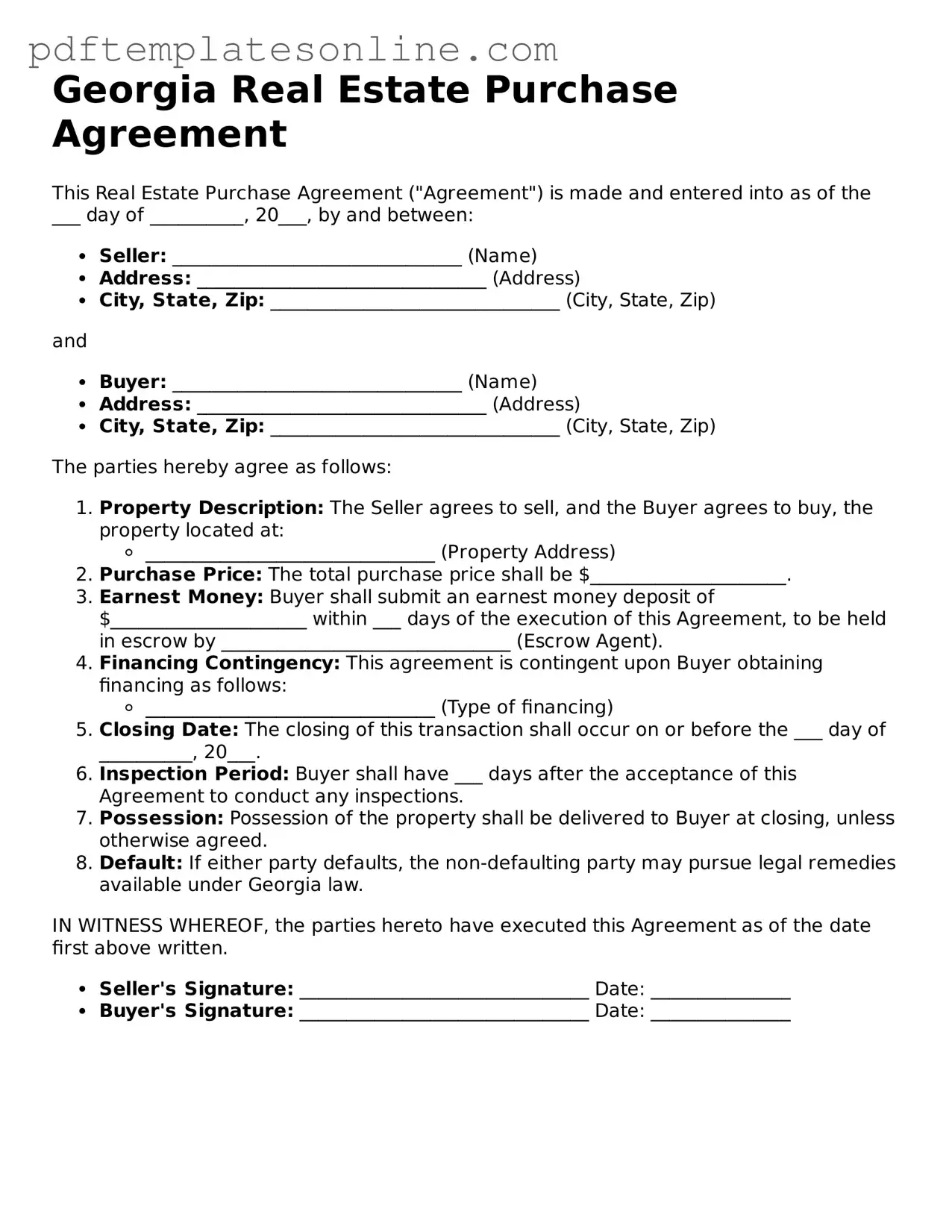Filling out the Georgia Real Estate Purchase Agreement can be straightforward, but mistakes often occur. One common error is not including all parties involved in the transaction. Buyers and sellers must be clearly identified. Omitting a co-signer or co-owner can lead to complications later.
Another frequent mistake is failing to specify the purchase price accurately. This amount should reflect the agreed-upon price between the buyer and seller. If the price is incorrect, it can create confusion and disputes during the closing process.
Many people also overlook the importance of including contingencies. These are conditions that must be met for the sale to proceed. Not addressing issues such as financing or home inspections can lead to problems if unexpected situations arise.
Another area where errors occur is in the description of the property. It's essential to provide a detailed description, including the address and any specific features. A vague description can lead to misunderstandings about what is being sold.
Buyers and sellers sometimes forget to check the closing date. This date is crucial for both parties. If it’s left blank or incorrectly filled out, it can delay the transaction and cause frustration.
Not including earnest money is another common mistake. This deposit shows the buyer's commitment to the purchase. If it’s not mentioned, the seller may question the buyer's seriousness.
People often neglect to read the entire agreement thoroughly. Skimming through the document can lead to missing important clauses or terms. Understanding every part of the agreement is vital to avoid future disputes.
Finally, failing to sign and date the agreement is a simple yet critical mistake. An unsigned contract is not legally binding. Both parties must provide their signatures to make the agreement valid.
